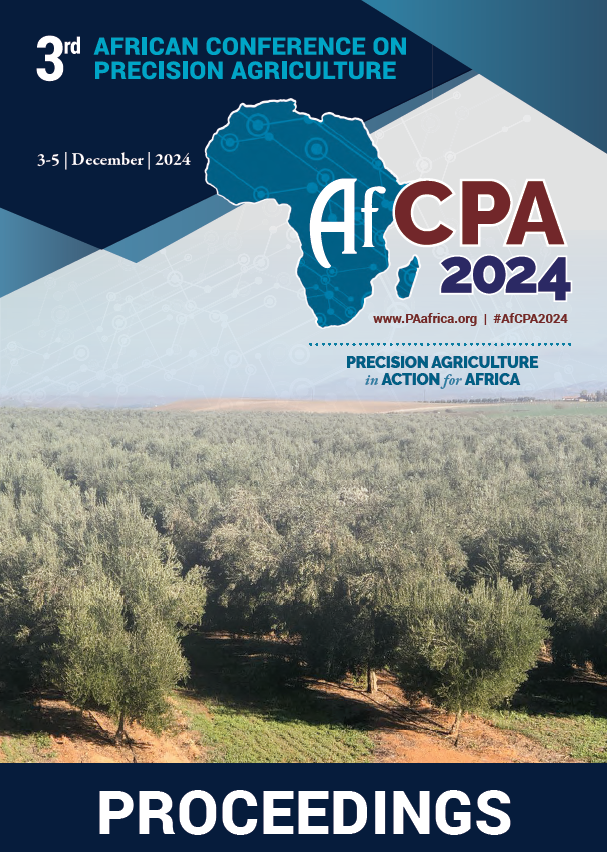Download the Conference Proceedings
Proceedings
Topics
| Filter results6 paper(s) found. |
|---|
1. Keynote 1 - Precision Agriculture for Smallholders : Imperatives for Africa’s AgricultureThe African continent is at the dawn of the Fourth Industrial Revolution (4IR) with significant challenges around inclusivity. The concept of the 4-IR will imply the deployment of technologies at unprecedented scale at a time when sustainable production underscores the need to produce twice as much with half the resources. For Africa, Precision Agriculture (PA) as a modern technology, represents a sustainable approach that will help farmers to manage their resources and increase product... Y. Akinbamijo |
2. Keynote 2 - Satellite Earth Observations and Machine Learning for Agricultural Monitoring in Sub-Saharan AfricaFood security is one of the most pressing issues faced by many African countries today. 2019 brought further shocks and setbacks to crop production across Africa. Farmers in East Africa, for example, faced more devastating floods, the most severe (and still ongoing) desert locust infestation in 70 years, and of course the COVID-19 pandemic, which has affected every sector and every food sys... C. Nakalembe |
3. Keynote 3 - Setting the Record Straight on Precision Agriculture AdoptionAdoption of precision agriculture (PA) around the world has been uneven. Some PA technologies have been the most rapidly adopted agricultural technologies in history and others have lagged. Among the disappointments is variable rate fertilizer, which was among the first PA technologies, but has become standard practice only for some farming niches. PA is a tool box – Farmers take the tools that they need and leave the rest. For example, in countries with mechaniz... J. Lowenberg-deboer |
4. Precision fertilizer management for soil fertility improvement in Sub-Sahara AfricaAttainment of food security remains one of the biggest challenges facing sub Saharan Africa. The continent continues to experience low production as a result of the low and declining soil fertility and land degradation, which have been compounded by unfavorable climatic conditions. Since the 1960s, there have been effort to transform the agricultural sector through promotion of diverse approaches of soil nutrient management. Research has demonstrated the potential and importance of fertilizer... A. Bationo |
5. Keynote 6 - Farmer-led design and knowledge sharing: Empowering smallholders to maximize impactProducers Direct is an international non-profit led by smallholder farmers for smallholder farmers. With over a decade of experience in farmer-led design and experimentation, Producers Direct has piloted and scaled a number of in-person and digital solutions that have improved the livelihoods for over 1 million small-scale farmers across East Africa and Latin America to-date. International recognition for our work has included UK Google Impact Challenge winner; World Bank Collaborative D... C. Rhodes |
6. Keynote 8 - Precision Agriculture in Sub- Africa: The Path ForwardSmallholder farmers contribute significantly to food security and rural livelihoods in Africa, but their yields are often low due to declining soil fertility, high input costs, and decreased availability of land for cultivation among other factors. These challenges are exacerbated by climate change. Furthermore, soil physicochemical and biological properties are heterogeneous among farms within same or different agro-ecological zones, with obvious consequences for yields. This variabili... K. Frimpong |
